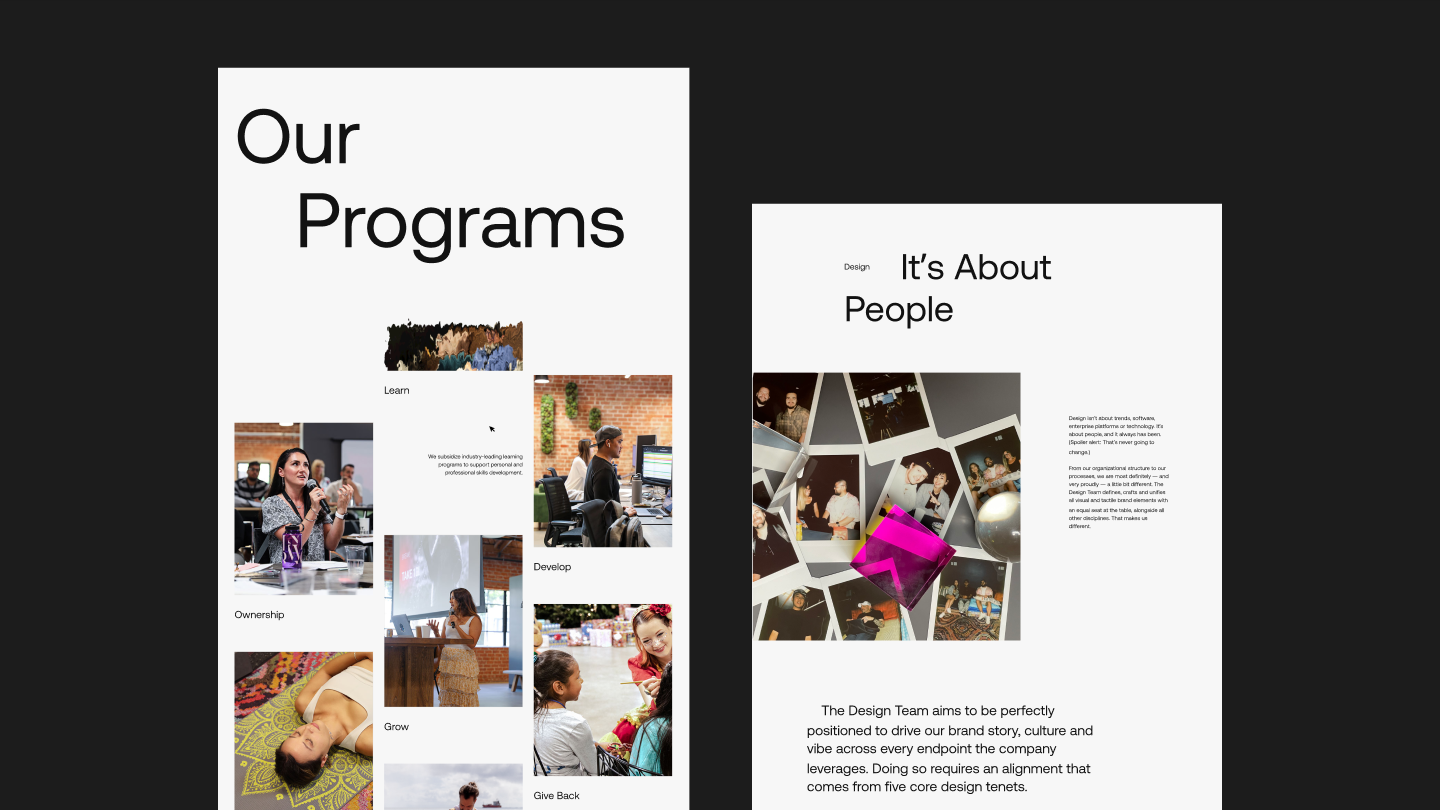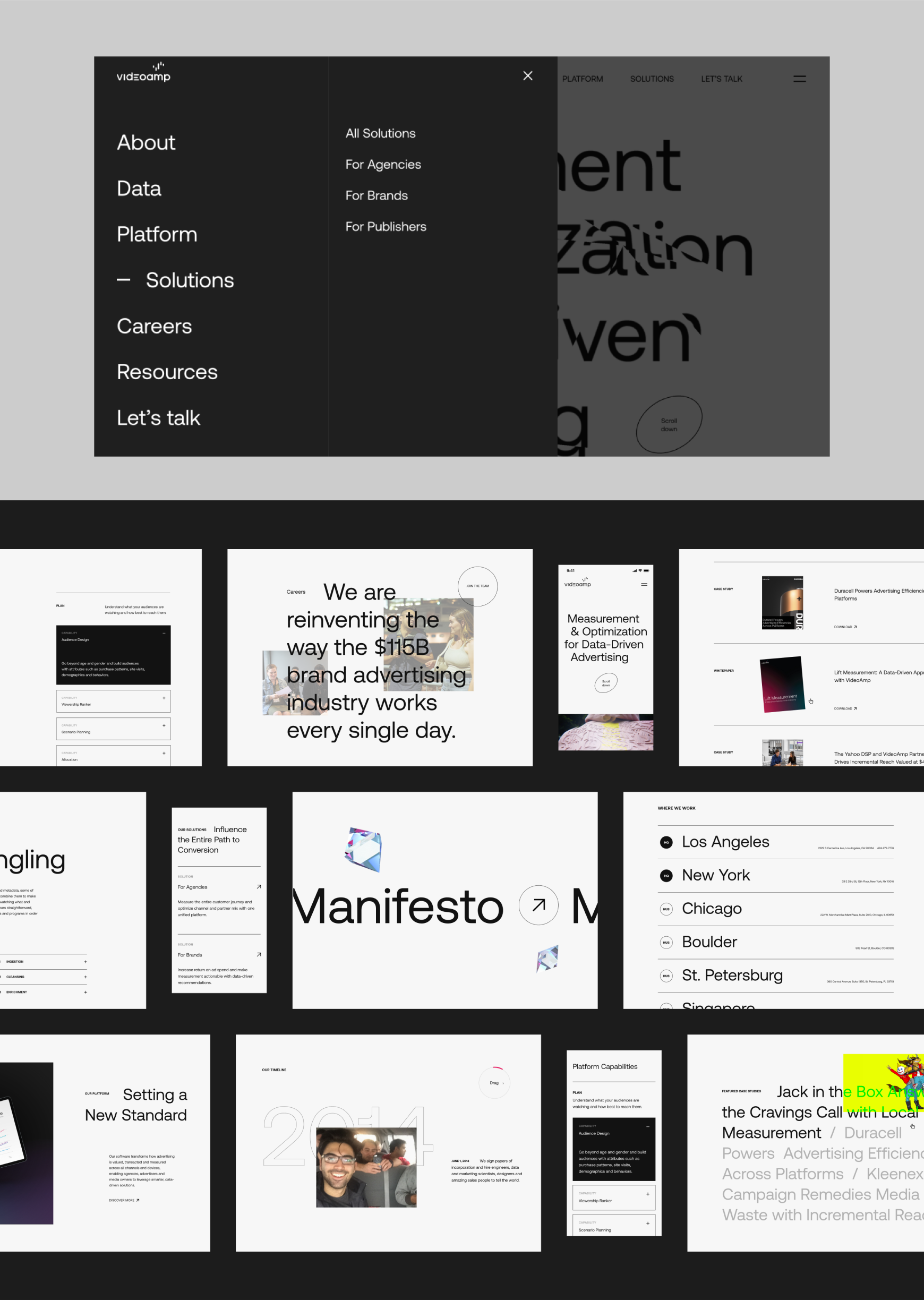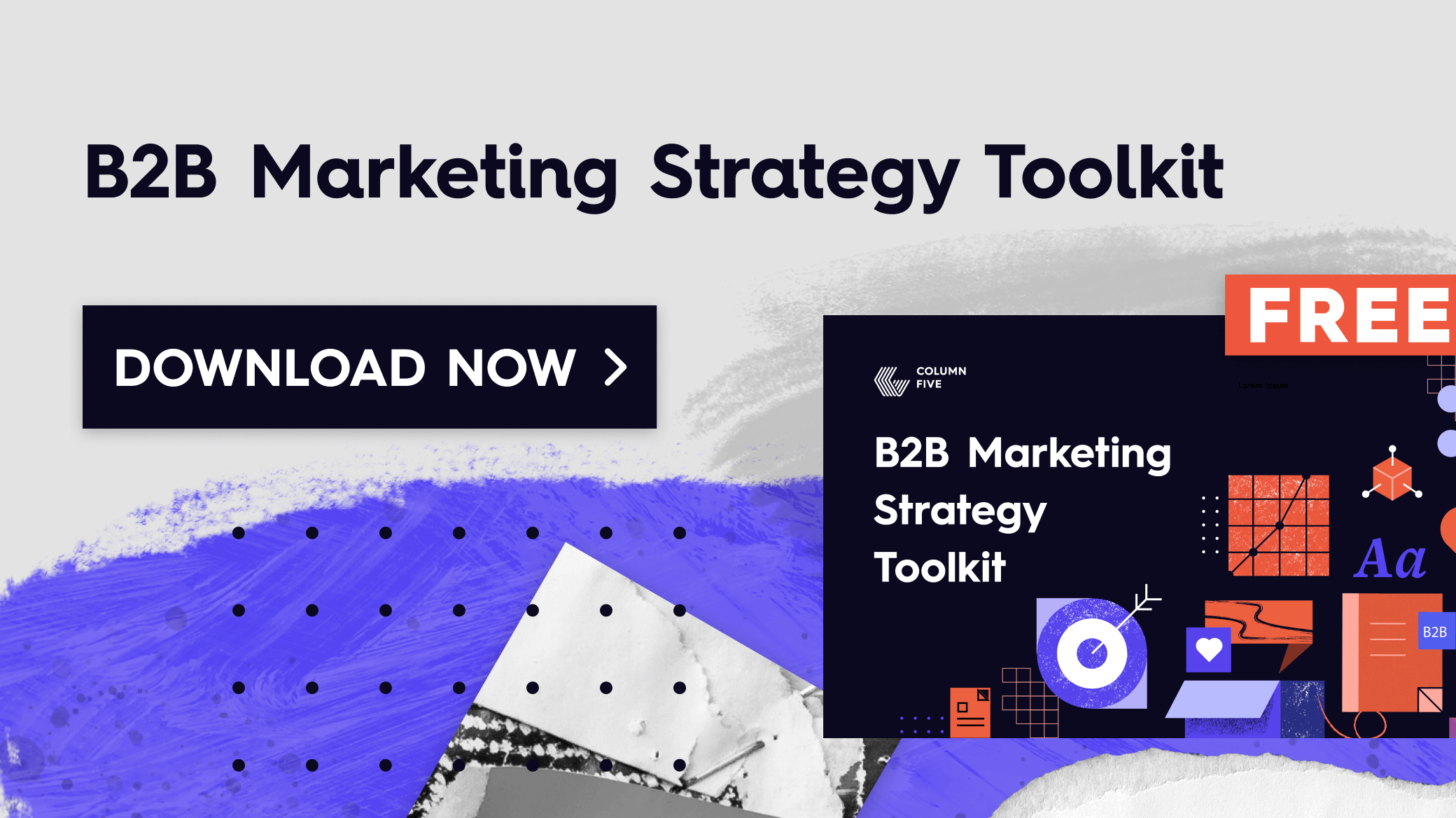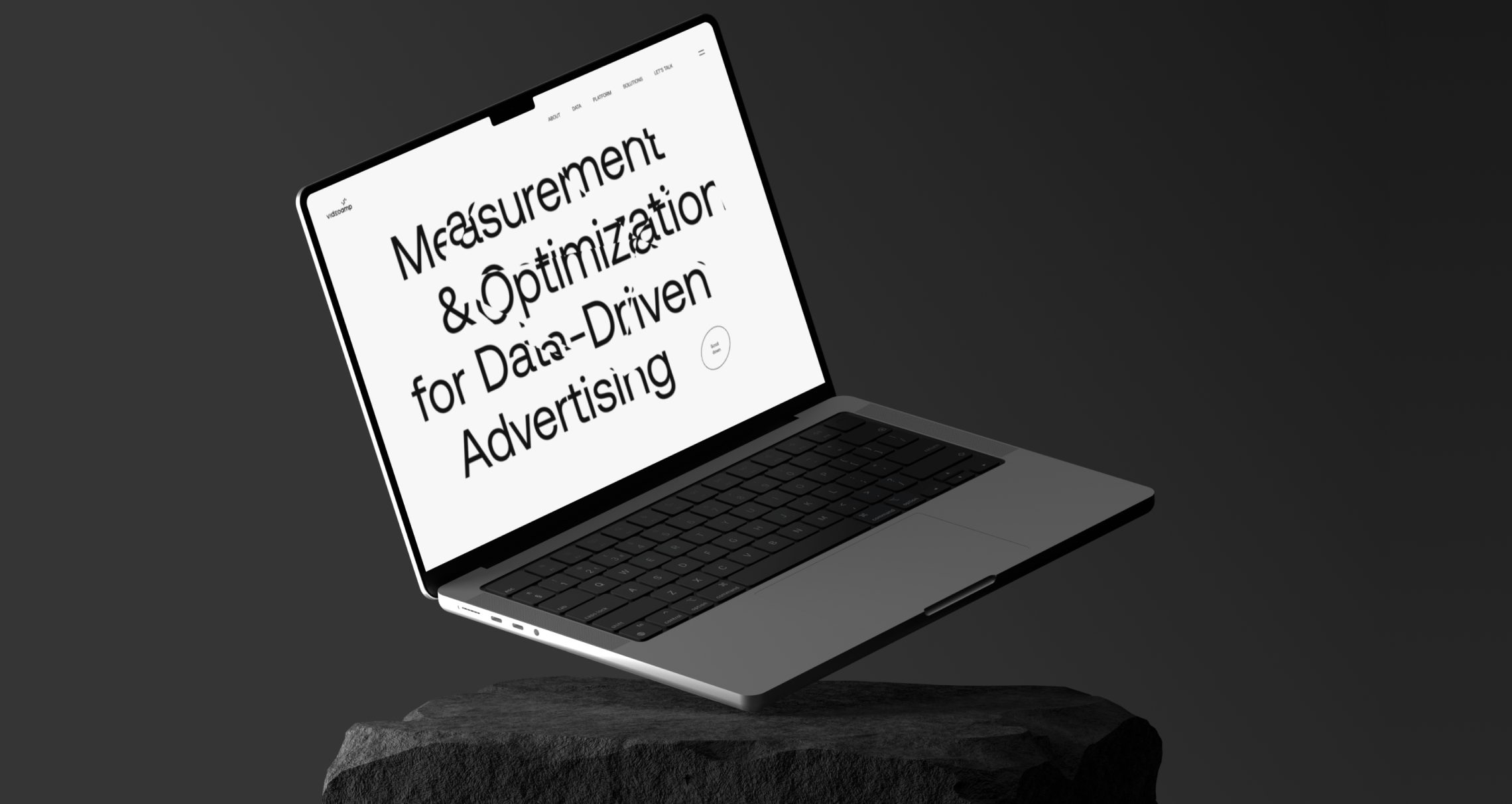If you want your brand to grow, you need every piece of your brand story to connect with your consumers. But if you’re struggling to communicate who you are, especially through your website, it’s tough to build a relationship (much less convert people). That’s exactly the challenge VideoAmp, a media measurement and optimization software company, was facing. After raising Series C funding, the company needed to position its brand and marketing for the next growth phase—starting with a website redesign. Knowing we’re expert brand storytellers, they asked us to bring this customer-converting website to life.
A Website Redesign with Epic Results
A website redesign is more complicated than many people realize, but with the right strategy, we knew we could make VideoAmp’s site brand storytelling that much more exciting and engaging. So, how did we transform their site and increase MQLs 850% in the process? Today, we’re breaking down everything we did, plus our best tips and tools to help you tackle your own site revamp and get real results.
Step 1: Clarify the brand strategy.
Many people assume a successful website redesign is all about aesthetics. But it doesn’t matter what your site looks like if it isn’t telling the right brand story. So, before diving into color palettes and mockups, we started with a deep dive into VideoAmp’s brand strategy: Who is the brand? What do they do? How are they hoping to grow?
We started by identifying their brand heart, goals, and key messaging. These core elements would influence every future decision we made for the site, from messaging to design, so it was imperative to align the team’s thinking.
How You Can Do It
- Conduct stakeholder interviews. Engage with key stakeholders to gain a deep understanding of your brand heart (comprised of your vision, mission, purpose, and values). Once these core tenets are articulated, you can build out your messaging to better communicate them.
- Analyze competitors. How do they present themselves? How can you differentiate your brand? What gaps in the market can you fill? Use our competitor analysis template to identify these opportunities.
- Develop your messaging pillars. If you want to tell a consistent, cohesive brand story, you need your full brand messaging framework fleshed out (including your tagline, value prop, and supporting story pillars). Use our brand messaging matrix to articulate these, and it will be much easier to produce subsequent copy. (Your brand voice may also need an update—find out more about how to uncover that.)
Tip: A brand strategy is comprised of many things, so you can’t just tweak your heart or messaging and call it a day. You need to look at your brand holistically and make sure every aspect is aligned. To make this process easier, download our full brand strategy toolkit to get through each step.
Step 2: Design a visual identity that reflects the story.
With a clear brand strategy in place, we moved on to designing a site visual identity that communicated VideoAmp’s value. Again, VideoAmp is a software and data startup, so their ability to visualize information effectively is a significant part of their brand story.
To reinforce their data-driven roots, we used a clean and sophisticated color palette paired with abstract visualizations (a nod to precision measurement). To add more dynamic energy, we also incorporated animated visualizations. These helped the brand stand out from competitors (who had more static content) and created a more exciting experience for users.
How You Can Do It
- Choose the right color palette. What emotions do you want people to feel? What reputation are you trying to cultivate (e.g., fun, playful, serious, or creative)? Choose a limited color palette and use color intentionally to draw the eye to key information. You can start with our guide to choose the right brand colors.
- Add motion. Whether it’s an explainer video, motion graphic, or animated GIF, video is a fantastic way to grab attention and communicate effectively. Find out more about the different applications for video and how you can use them to make stronger connections with your customers.
- Infuse brand personality. There are so many subtle ways you can humanize your brand, whether through a funny CTA or a powerful hero image. Look for opportunities to add your personality in unique and creative ways.
Tip: A strong brand identity is about more than color and typography. Things like illustrations and data visualizations are also key things to consider. See our free brand identity toolkit for more guidance on how to bring your brand to life through design.
Step 3: Implement a persona-based UX strategy.
To make a significant impact on every visitor, we needed to design a UX experience tailored for different personas. To understand what people wanted—and what VideoAmp should communicate—we dove into site analytics to understand user behavior and preferences. This helped us define website journeys for personas, ensuring that the messaging addressed their needs, the imagery was relevant, and users could easily navigate to the information they wanted.
During this process, we also had multiple conversations about what makes VideoAmp unique. After diving into their analytics, we noticed a particularly significant insight: on the existing site, visitors spent a lot of time engaging with culture content. Culture is a huge part of the VideoAmp brand (as VP of Brand Design Michelle Kim spoke about on our Best Story Wins podcast), so we added more employee-centric videos, imagery, and content that reflects the company’s values. This helps site visitors understand what VideoAmp does and, equally important, get a sense of who they are.
How You Can Do It
- Define your user personas. Identify audience segments that will interact with your content. Consider their goals, pain points, and preferences, and lead with content that speaks to those. See our guide to build personas if you haven’t done this work yet.
- Assess your buyer journey. Map out user journeys to understand how each persona will navigate each stage of the journey, including what messaging they need to hear to move to the next stage. Then you can tailor your content (including site) to tell those stories.
- Design personalized experiences: Personalization is incredibly effective, and AI tools make it easier to customize content per people’s preferences. Think of things like personalized calls-to-action, ads, and emails to keep people engaged.
Tip: Copy can do a lot to hook people emotionally, whether it’s the header on your homepage or the content on your About page. Follow these tips to write copy that grabs people’s attention.

Step 4: Develop the website.
Again, a successful website redesign requires much more than a few new wireframes. The work you’ve done up to this point gives you the information you need to make strategic design decisions that will provide the best UX experience.
For VideoAmp, we developed a smooth, optimized site that used both copy and design to communicate (and reinforce their brand story).
How You Can Do It
- Optimize for mobile. To accommodate multiple screens, you need a responsive site that works across devices and browsers.
- Improve performance. Ensure your website is fast and responsive. Use techniques like lazy loading and image optimization to enhance performance.
- Use a modular design approach. Create reusable components and templates to make the site easy to update and scale. This is especially important for growing brands with multiple content creators working on the site.
Tip: Implement tools to test your website and track user behavior. This will reveal both dead zones and the most popular areas of the site—valuable information that can help you adjust and improve your UX over time.

Step 5: Launch and track results.
A site rebrand is always a lot of work, but when you approach it strategically, keep your user in mind, and use every opportunity to tell your brand story in creative ways, the results can be astounding. For VideoAmp, we saw an 850% increase in monthly MQLs. (Our goal was a 200% increase, so this was especially exciting.) We also scored an Awwwards Honorable Mention and a Mobile Design Excellence Award.
Most importantly, we’ve continued to support VideoAmp through ongoing site updates and strategy, helping them continue to evolve, iterate, and take over their market. (In fact, they’ve raised $1.4 billion in funding since the site launch—a huge win for everybody.)
The work is never done, however. Once you launch your new site, it’s only the beginning. You need to optimize your site over time, based on your learnings and observations.
How You Can Do It
- Monitor performance. Use analytics tools to track the site’s performance and identify areas for improvement. (And make sure to test your tools to ensure they’re working!)
- Solicit feedback. Ask users and stakeholders about their experience to inform future iterations.
- Be agile. Stay flexible, and be prepared to make changes based on new insights and feedback. (See our guide to creating an agile marketing strategy for more tips on making smart decisions quickly.)
Note: You may not see such drastic results immediately, but over time you’ll make strategic improvements that will pay off in the long run.
Of course, if you want to stay ahead of the competition, you need to stay up-to-date on the latest marketing trends and best practices.
- Subscribe to our Best Story Wins podcast to find out how industry leaders are capturing hearts, minds, and market share.
- Or you can head over to our resources center, where we have more free guides and toolkits to help you work more effectively.
And if you need anyone to help support your strategy, tackle your design work, or take content creation off your plate, there are plenty of ways we can work together. Find out more about how we’ve helped other brands win, or reach out. No matter your challenge, we’d love to help you hit your goals—and get the results you deserve.





